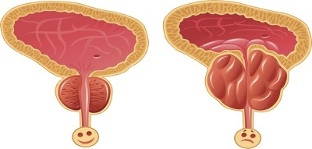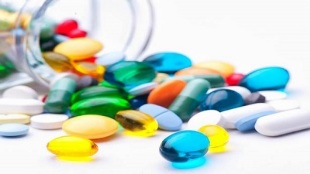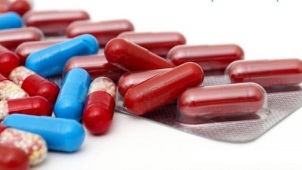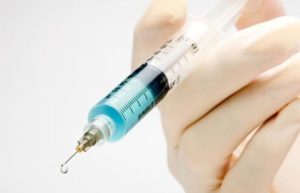Prostatitis drugs are the main and basic tool for the treatment of any form of this pathology. The mechanism of action of these drugs is to eliminate every element of the developing disease, which helps a person to recover faster.
The main thing to remember when choosing drugs used to treat prostate adenoma or prostatitis is that these drugs are prescribed by a qualified specialist. After all, taking into account the interaction of drugs for prostate adenoma with other drugs taken by the patient, as well as all the side effects of the body, only a doctor will be able to prescribe a separate method of treatment for each patient.
Every man should know that prostate pathology alone cannot cause psychological and physical discomfort - the wrong medication can also cause many problems: sexual dysfunction, various allergic reactions or impotence. Therefore, you should take a very responsible approach not only to the choice of medication for prostatitis, but also to the treatment of such diseases in general.
The main groups of drugs for BPH and prostatitis

The treatment of these diseases is chosen by a urologist depending on the cause, duration, symptoms and form of the disease (chronic or acute), as well as the general health of the patient.
If a patient develops symptoms of acute prostatitis, antibiotic treatment may be prescribed as soon as possible. If the disease is chronic, treatment with antibacterial drugs can last two to three months. It is very difficult to get rid of prostate adenoma and prostatitis completely. The outcome of such treatment will depend not only on the characteristics of the attending specialist, but also on the patient himself, whose task is impeccable and strictly adheres to all doctor's prescriptions.
In this case, it is very important to use a complex method of treatment of the disease:
- to take antibiotics;
- use of hormonal drugs;
- use of alpha-blockers;
- immunomodulatory therapy;
- to take muscle relaxants and antispasmodics;
- to use physiotherapy methods;
- use of herbal medicines (herbal medicine);
- Maintain a healthy lifestyle.
To permanently get rid of unpleasant symptoms such as burning sensation of prostate adenoma, abdominal pain, urinary problems and decreased sexual function, a man should take all the medications prescribed by a doctor for prostatitis, and at the same time take other treatment points necessary to succeed. . treatment of this pathology.
Alpha-adrenergic blockers - what are these drugs and how they affect a man's body

One of the main tasks in the treatment of adenoma and prostatitis is to improve the normal functioning of the urinary system. The process of urination from the bladder is affected by an increase in the tone of the muscle fibers of the prostate gland and a significant increase in the size of this organ. The action of alpha-blockers is aimed at reducing the sensitivity of sympathetic nerve endings to norepinephrine and adrenaline. In men suffering from adenoma and prostatitis, the excitation of the nerve endings is much higher than normal, which in turn leads to spasms and tension of the smooth muscles surrounding this organ.
With the help of alpha-blockers it is possible to achieve the following positive results in the treatment of this disease: reduction of spasm in the cervical part of the bladder, improvement of urine flow, relaxation of muscle fibers of the prostate gland, free movement of urine in the prostate.
Alpha-blockers are drugs that have a cumulative effect on prostatitis. Therefore, they should be used for 2-4 weeks to make the patient feel comfortable taking these medications. These drugs are used in medicine not only to treat prostate adenoma or prostatitis, but also to lower blood pressure. The following side effects may occur as a result of taking alpha-blockers: dizziness, lethargy, increased fatigue, migraine, weakness. Due to the relaxation of the muscle fibers of the genitourinary system, a man may experience a discomfort such as retrograde ejaculation. This condition is caused by the flow of semen directly from the vas deferens to the bladder.
The group of alpha-blockers includes about 60-65 substances from prostatitis. In this case, the specific drug is selected by the doctor depending on the physical condition of the man. Treatment with such drugs is always very long, and sometimes patients have to take alpha-blockers for life.
5-alpha-reductase inhibitors - what is known about the mechanism of action of these drugs

The main effect of these drugs is the size of the prostate gland. Impairment of the effectiveness of the use of 5-alpha-reductase inhibitors affects the process of minimized urine flow. For prostatitis in men, these drugs have a stimulating effect on the synthesis of testosterone in the male body, which significantly slows down or completely stops the growth of prostate adenoma.
It should be noted that any drug belonging to this group not only manages the condition of benign prostatic hyperplasia, but also reduces the likelihood of surgical intervention on this organ. Sometimes 5-alpha reductase inhibitors do not help the patient and the growth continues. In this case, the inevitable choice is the surgical removal of the tumor by the TUR method.
Herbal preparations for the treatment of prostate adenoma
Prostatitis drugs in this group contain only natural herbal substances.
The effectiveness of herbal preparations has long been proven in practice. Successfully removes urethral obstruction, reduces the amount of residual urine in the bladder and improves the quality of urination. For the treatment of prostate adenoma, it is recommended to take these drugs for a long time until significant clinical improvement is achieved and the symptoms of the disease disappear. Such drugs for prostatitis have been proven to be the safest and have virtually no side effects.
What are the ways to treat prostate disease?

- Injections- they significantly increase the activity of the prostate gland.
- Rectal suppository- it helps to improve metabolic processes in the body. After using these drugs, the patient should rest for 30-40 minutes. Treatment of adenoma using candles lasts from 5 to 10-12 days. Possible manifestation of adverse reactions to some components of the drug in the form of evidence or itching.
- Instillations- This type of therapy involves injecting a drug solution directly into the prostate area. The procedure is performed by a urologist who opens the drug into the urethra and injects it into the urethra. You can enter 4-5 ml of solution in one session; Before performing this procedure, the patient must empty the bladder cavity.
- Enemas- It is very difficult to find such drugs that can be used for enemas for prostatitis in modern pharmacies. However, the pharmaceutical industry produces many herbal medicines worth noting. This procedure is performed mainly before bedtime to avoid over-cooling and overloading the prostate after enema. Motherwort, chamomile, sage or calendula are ideal for treating this condition. With the help of an enema, the patient can get rid of pain and other symptoms of the disease, at least for a short time.
Preparation for prostatitis in tablet form
Pills for prostate adenoma should be prescribed by the attending physician after a thorough examination of the patient, which will allow to determine the stage of the disease and the most effective method of treatment. Such drugs are most often used to relieve the symptoms of this disease, and like all other drugs for prostatitis, are divided into several groups according to the mechanisms of action.
Men are often given the following medications for the symptoms of this pathology:
- Antibacterial- is prescribed in cases where the cause of adenoma or prostatitis is an organ infection. The choice of drugs in this group is made by the doctor treating the disease.
- Anti-inflammatory- It is recommended to take these drugs for prostatitis in the acute course of the disease to relieve pain during urination.
- Antispasmodic- for the treatment of prostate adenoma, these drugs effectively relieve spasms and have a good effect on the muscles of the gland, which activates blood circulation in this organ.
























